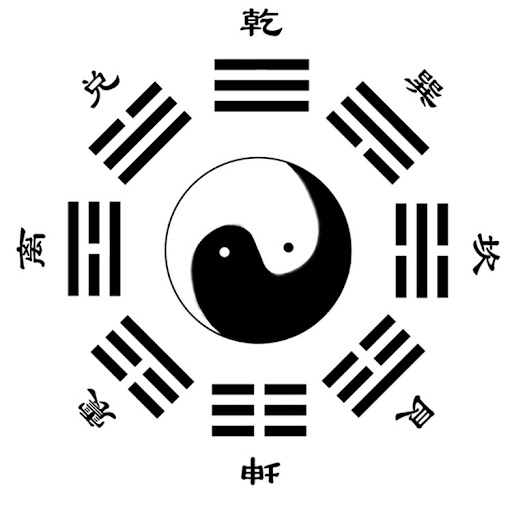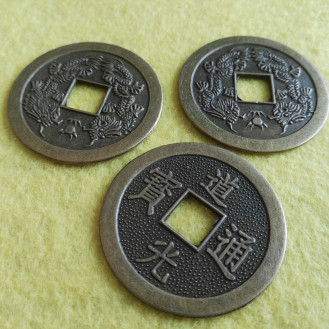5 reasons to read the Classic of the Movement
A bookstore success in Europe, the mysterious and ancient book called The Classic of the Movement continues to intrigue us with its… effectiveness. Yes, this is a Chinese book, really Chinese because the theory only has a pragmatic function! You ask him questions about everyday life and he answers you. But there are still 4 other reasons to use it.
1. Discovering a fascinating system
Whether or not you draw the Yi Jing, out of simple curiosity or to obtain a precise answer to a concrete question, the study of the Yi Jing, its form, its texts, its construction principles and its internal consistency is in itself an opportunity, a journey, an adventure. Because the overall system, developed by generations of shamans, then polished by generations of literati, constitutes an astonishing cultural object, which has crossed continents and centuries, and which does not have much to do with it. In our cultures we don’t have direct equivalent. It would be a great pity not to at least experience it.
2. Understanding the world differently.
Even if you do not easily accept the idea that there is the slightest possible causal link between questions and answers, reading, consulting and confronting Yi Jing is to open up to another way. to think about the world, more open, more flexible, because also more “vague than ours. A way of remembering that the analytical, Cartesian and scientific logics which largely govern our usual vision are not the only ones in the world, nor the only possible ones. That other civilizations were built on other bases, equally elaborate, rich and controlled.
The Yi Jing thus proves the diversity of the possible modes of relation to the world, and testifies to the depth of development and thought of Chinese culture.
3. Developing your intuition
CG Jung – one of the first in Europe to be really interested in Yi Jing without religious prejudices – had said it well: in each of us there are two functions of perception : sensation and intuition. Nourished by the data of the visible senses, the first surely advances in ground spotted in a concrete matter, while the second, more mysterious and more volatile, but also faster and more speculative, feeds on the invisible to work out what does not yet exist, or cannot really be captured. However, in positivist worlds where only the measurable has the right of citizenship, the first has largely won over the second, even to the point of making those who are best endowed with it doubt the reality of intuition.With its rigorous construction, its very concrete images and – at the same time – its hermetic texts and its proven.
To practice Yi Jing is to confront each other with an ancient practice, a precise text, a systemic order of mysterious practice, Yi Jing allows you to restore balance, by submitting our ordinary certainties escapes, going out of its own can thus help us to soften what there would be in us that is try to the test of its apparent contradictions and its delicate subtleties, the most vague, the most indescribable to ourselves in dialectics. Or, conversely, to anchor and reassure the most rigid part, too many times in the dimension that we usually see, to be enriched by the confrontation and to approach a reconciliation.
4. Clarifying a personal situation
Preparing, clarifying, maturing your question upstream, making yourself available for a gesture of sharing or launching, is already experiencing a form of clarification. Confronting yourself then with an old text, simple, pure, direct, evocative, is still offering yourself a chance to break out of its deadlock. We often have a hard time correctly reading situations that concern us too closely, just as we have a hard time choosing when too many scenarios are available to us. To draw the Yi Jing is to offer yourself a frame and a text to see more clearly. As a point of support, sure, neutral and independent, always present, always available. A lighthouse in the fog of our lives. The situation sometimes suddenly becomes simpler, the decisions to be taken more obvious, the attitude to adopt more understandable, sometimes not, but it is rare that a print leaves us at the starting point, unchanged.
5. Aligning with an invisible order
And then, if the Yi Jing’s answer does have some real validity – and the sometimes astonishing precision of the number of prints made would tend to imply it, it is that we could therefore connect us to the order of the world … by the detour of an old book. Each successful reading – like each event of clairvoyance “moreover – thus places us before this possibility, and forces us to question our relationship to the world in a different way. Because if everything is thus connected … do we then really have other duty and no choice but to fit harmoniously into this world order? The Yi Jing would then echo an invisible, holistic and subtle order, but also somewhere imperative. There would be no question of procrastinating, only of procrastination. understand, accept and align.
Free act of open curiosity or exotic experience, pragmatic decision, initiatory adventure or sacred act … in the end, it’s up to you, and you alone, to decide.


